Important, But Often Forgotten Gear
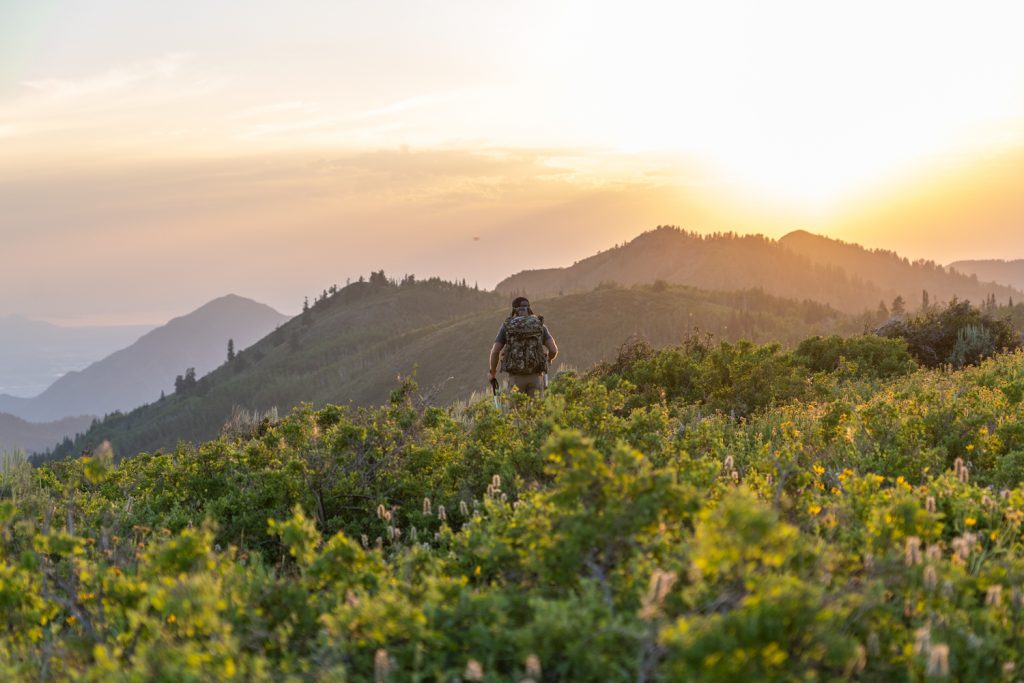
We have so much information at the tips of our fingers. Within seconds, you can search online for pretty much anything and start learning about it. When it comes to hunting and the outdoor related topics, you can quickly and easily find information online. From gear reviews and tactics to how-to articles and trip recaps, it’s all just a click away. But there are certain lessons that we will inevitably end up learning on our own the hard way. Maybe we simply never stumbled onto the right article or bit of information that would have helped us be better prepared for a certain situation. I know I have learned a lot from reading reviews, articles, and forum posts about all sorts of different topics, and I also feel like I’ve learned quite a bit through personal experience. The purpose of this article is to go over some items that can be easily overlooked, but be invaluable in the field in the right situation. Alexander Graham Bell once said ‘before anything else, preparation is the key to success.’ Preparation can also be the key to comfort, and more importantly, safety. Here are some items that I will usually have with me on all day trips, and I never head into the backcountry for any extended period of time without.
Backup headlamp
I think a headlamp is a necessity for any trip into the backcountry, regardless of how long you think you’ll be out. If you’ve had to hike out in the dark before, you know how important a headlamp can be. If you’ve ever had to process an animal and pack it out in the dark, you know how important a headlamp is. If you haven’t done either of these things before, your time will come. The weight of a headlamp is almost negligible, but in the dark it’s almost invaluable. Since electronics can fail at any point in time for a variety of reasons, I think having a backup headlamp is very important. I will always have my go-to headlamp in my pack, all the time, and in my ‘possibles’ pouch I carry a backup. My backup headlamp is the Petzl e+LITE. It weighs just 26 grams and is my backup insurance policy so that I’m never without light, no matter what. Another important point is to regularly change the batteries in your headlamps, both in your primary and backup. I will always swap out the batteries in my primary headlamp before any big trip, or at least every couple months during hunting season, and for my backup lamp I will replace the battery every year.

Multitool
A multitool can prove useful in many situations. There are several options of multitools to choose from, some have more options at the penalty of extra weight, and some are more basic but are also lighter. I always have my Leatherman Skeletool with me, whether I’m in the backcountry or running around town. It’s my go to multitool and has yet to let me down. It’s got Phillips and Flathead screwdriver bits (2 different sizes of each), a locking foldable knife blade, pliers, and a can opener. I find the pliers, knife, and screwdriver to be most beneficial. One reason I really like having a multitool is so I can ensure my trekking pole locks are always tight. My trekking poles have prevented me from suffering numerous injuries, but they’re only useful if the locking mechanism is tight to prevent the poles from slipping when I lean on them for balance. It definitely doesn’t happen often, but I have had the lock come slightly loose while in the backcountry, and the only way to tighten them was by tightening the locking screw. If I hadn’t had my multitool with me, that pole would have been essentially useless.
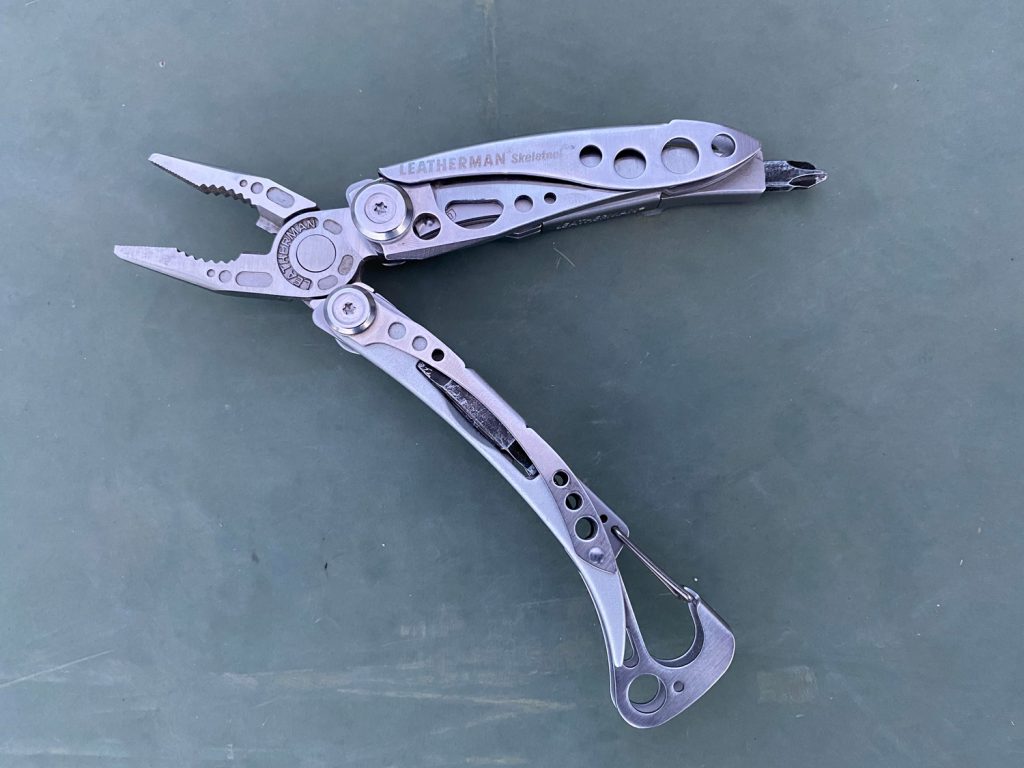
First Aid Kit
I think the importance of a first aid kit is obvious, but ask yourself, how often do I actually have one with me? The time to start carrying one is not after you or someone you’re with suffers an injury and needs first aid supplies. Telling yourself ‘I’m always careful’ is not a proactive approach. There are just so many elements to going into the backcountry that we can’t completely control that makes having a basic first aid kit so important. And, on top of having a first aid kit, I would urge you to know what’s in it and how to use it. Do you know how to use QuikClot? Could you brace a broken bone properly to prevent further injury? Do you have sufficient medication to cover basic sicknesses that can happen at any time such as migraines, diarrhea, vomiting, flu, etc.? You can’t account for every situation imaginable with your first aid kit, but a little preparation can go a long way and potentially save a life, maybe even yours.
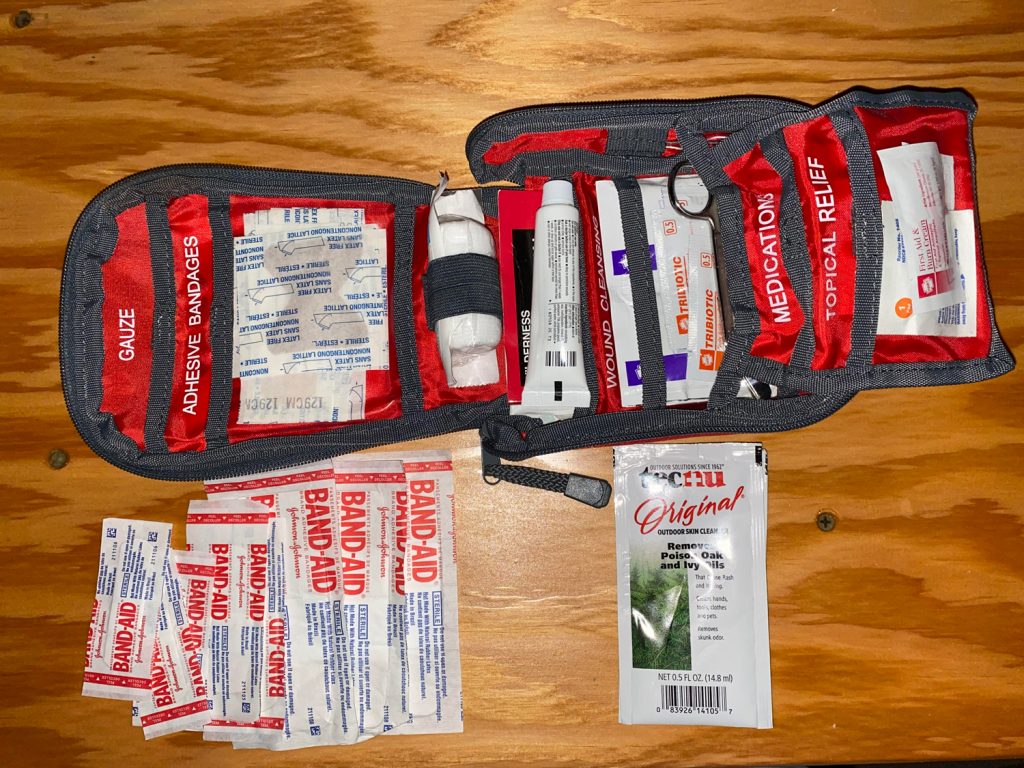
Basic Medication
Something else that goes hand in hand with a first aid kit is having some basic medication. I have a small waterproof pill container that has ibuprofen, Excedrin, Imodium, and sleep aid pills that I make sure to have with me on any extended stay in the backcountry. I like having ibuprofen to help with bodily pains and/or inflammation, I used to get frequent migraine headaches and still do on rare occasions, and I’ve had stomach bugs while away from home. I don’t always use the sleep aid, but they have definitely come in handy before. I don’t typically end up using these meds, but I’m pretty thankful to have them when I need them.
Tape
One thing I never leave home without are my trekking poles. And on my trekking poles I always have several wraps of tape, both duct tape and Leuko tape. Leuko tape has become my go to tape, from taping up sore feet to prevent blisters, to fixing broken gear. I have yet to need the whole roll of tape on any trip, so that’s why I’ll cut about 12”-18” off the roll and then carefully wrap it onto my trekking pole up near the handle. It’s amazing how useful some strong tape can be in the right situation.
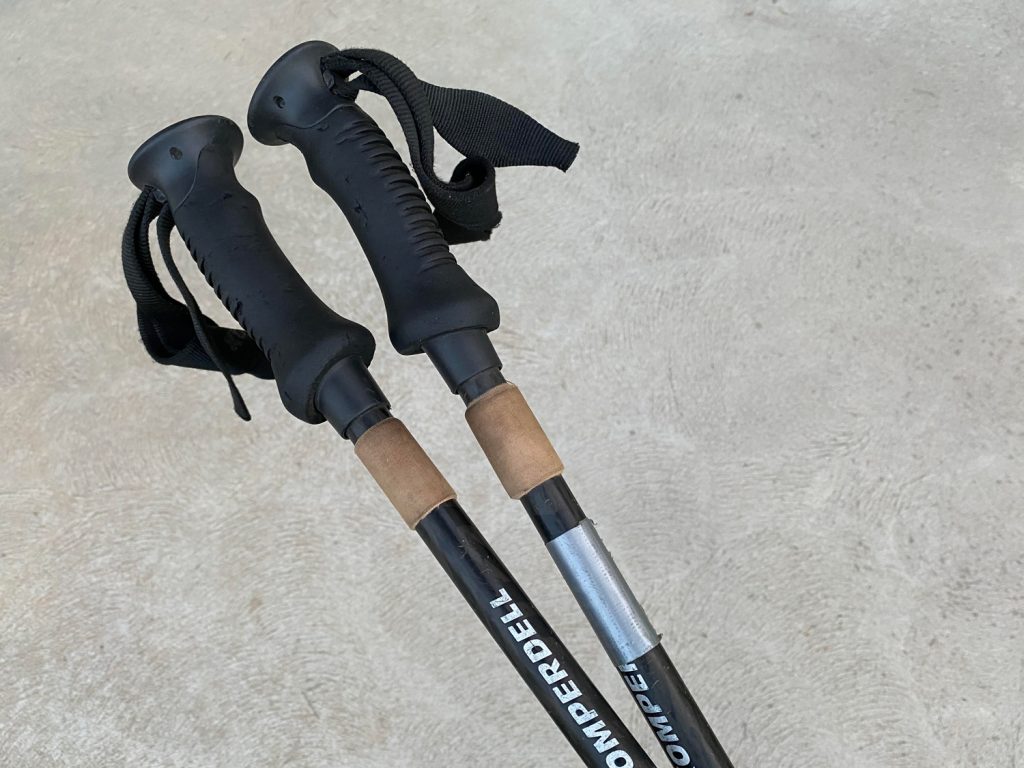
Toilet paper/wipes
I think the importance of this item also goes without saying, but I bet we all know someone who’s been stranded before and didn’t have any and had to improvise. I remember years ago hearing about a guy whose nickname was sleeves. I never gave it much thought until I heard the story of how he got the nickname; it was short and I’m pretty sure you can guess what happened. He hadn’t packed any TP thinking he’d be fine without, but Mother Nature had other plans, and he ended up having to cut the sleeves off his shirt. I like to bring a small length of TP rolled up in a ziploc bag, and I also like to bring a small amount of wet wipes with me in separate zip loc. Wet wipes can do wonders for cleaning in the backcountry, especially if you’ve got some funk built up and haven’t showered in 5 days or more. The first time you decide to go without TP and/or wipes and you end up needing them will be the last time you ever leave them behind!
Communication device
Cell phones are great for communicating, but a lot of the places I find myself going in the back country don’t have any service at all. I always take my Garmin InReach with me, even if going on a day hunt. Accidents can happen at any time. One of the reasons I really like the InReach is because I can pair it to my phone via Bluetooth and use my phone to send and receive messages. It’s much faster than trying to type out a message on the InReach itself, which you can do if you need to. You don’t have to have a cell phone to use the InReach; it can be used completely on its own to communicate. Another nice thing about an InReach is the map feature it has within the EarthMate app that you can access on your phone. I use my InReach all the time to communicate with family and friends, and also to look at maps. One thing I also try to always do is to keep my InReach in an easily accessible spot, not stowed away in my pack. My reason for this is if I fall and get injured and don’t have the ability or range of motion to get my pack off and dig my InReach out, it does me no good. I need to have it accessible in case of an emergency situation.
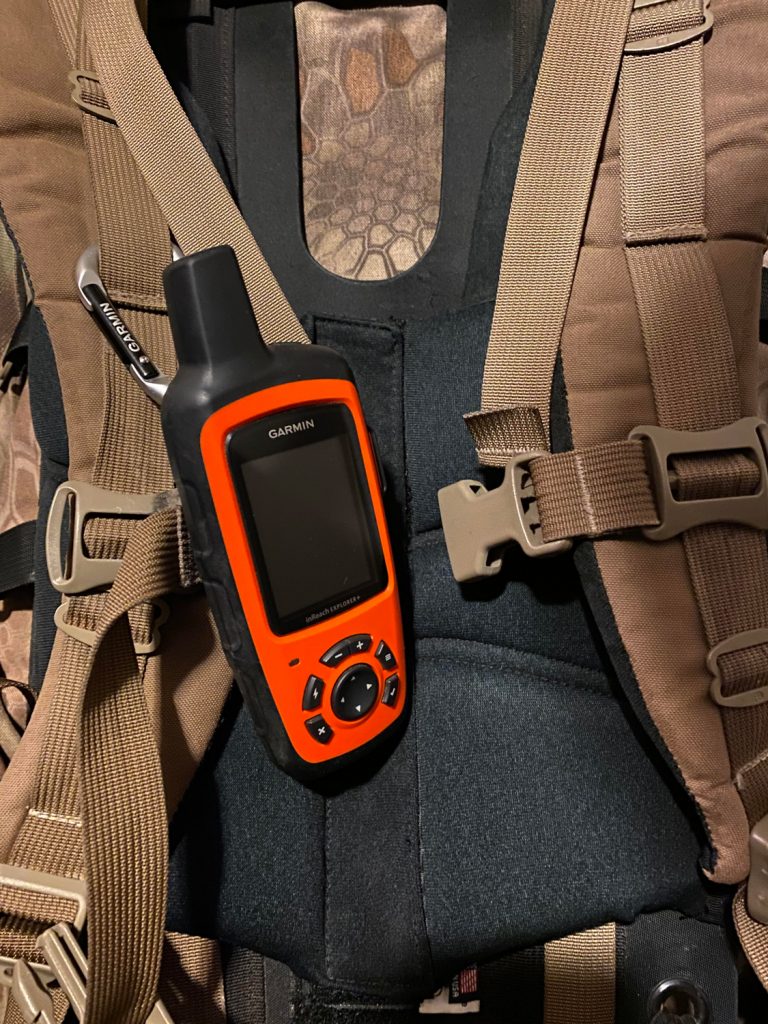
Tell someone where you’re going
Electronics can and do fail. An InReach is a great invention that I have come to rely on, but it is not perfect. I always tell my wife the general area I plan to go to. If she is not familiar with where I’m going, I’ll point it out to her on Google Maps. This is my version of having a backup for my safety net (my InReach). If I got knocked unconscious somehow and couldn’t use my InReach for help, having my wife know the general area I was planning to end up in could possibly save my life. In my mind, by letting someone know the general area of where to find me, I’m potentially reducing the need for a search and rescue team to be looking for a needle (me) in the haystack of hundreds or thousands of square miles of wilderness. I would strongly urge you to try to make this a habit; tell your spouse/significant other/family member/friend the general area of where you plan to be. It doesn’t have to be exact by any means, and it could end up saving your life.
As a case in point about devices failing, last fall I was helping a friend out with an elk hunt. I would be out of cell phone range all day, so I took my InReach with me, and I also told my wife roughly where I was going. I left well before dawn and got back long after dark. During the day, I’d sent my wife a few messages to check in, and I’d received a few messages from her, but something seemed off. She never responded to any questions I’d asked her, and she kept asking how things were going. I’d told her we’d killed a bull, but it’s like she hadn’t read that part. Long story short, when I got home she showed me the message thread from my InReach on her phone, and she had not received a single message from me the whole day. Turns out Garmin had identified an issue with AT&T that morning and all messaging between InReach devices and phones with service through AT&T was not working at all. I think it took them over a day to get it resolved. This is the only time I’ve been aware of something so drastic happening with Garmin services, but it goes to show that these devices are not foolproof, and issues do happen. One thing I learned after that day is that if I would have been sending my InReach messages to her email instead of her phone number, she most likely would have gotten them, since her email is not through AT&T. This is why I like to tell her where I plan to be at on a trip as my failsafe.
These items are things I don’t leave on a trip without having in my pack. To me it’s all about putting the odds in my favor and reducing risk, and I think these items will do just that for you.
